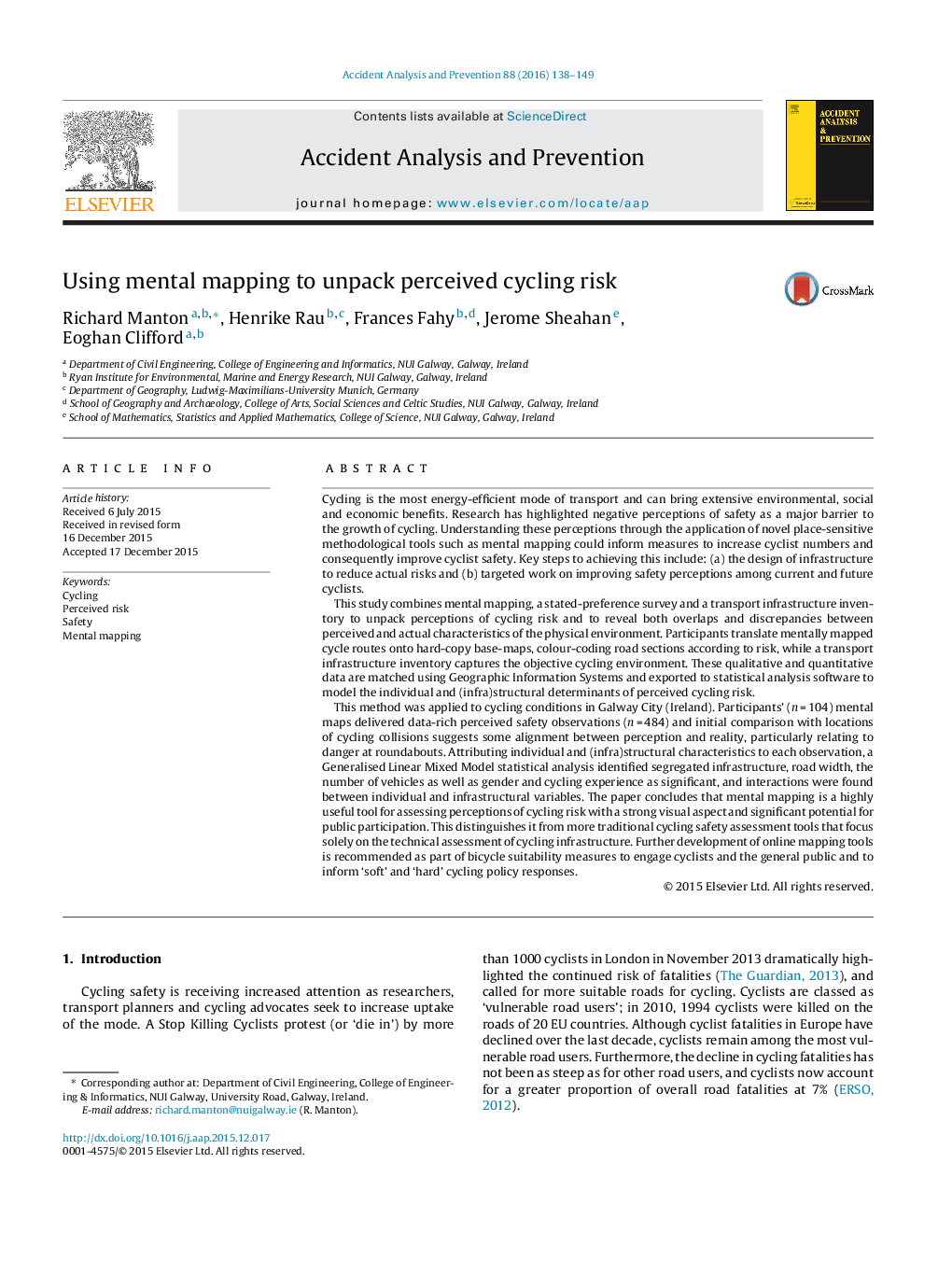| Article ID | Journal | Published Year | Pages | File Type |
|---|---|---|---|---|
| 6965372 | Accident Analysis & Prevention | 2016 | 12 Pages |
Abstract
This method was applied to cycling conditions in Galway City (Ireland). Participants' (n = 104) mental maps delivered data-rich perceived safety observations (n = 484) and initial comparison with locations of cycling collisions suggests some alignment between perception and reality, particularly relating to danger at roundabouts. Attributing individual and (infra)structural characteristics to each observation, a Generalised Linear Mixed Model statistical analysis identified segregated infrastructure, road width, the number of vehicles as well as gender and cycling experience as significant, and interactions were found between individual and infrastructural variables. The paper concludes that mental mapping is a highly useful tool for assessing perceptions of cycling risk with a strong visual aspect and significant potential for public participation. This distinguishes it from more traditional cycling safety assessment tools that focus solely on the technical assessment of cycling infrastructure. Further development of online mapping tools is recommended as part of bicycle suitability measures to engage cyclists and the general public and to inform 'soft' and 'hard' cycling policy responses.
Keywords
Related Topics
Physical Sciences and Engineering
Chemical Engineering
Chemical Health and Safety
Authors
Richard Manton, Henrike Rau, Frances Fahy, Jerome Sheahan, Eoghan Clifford,
